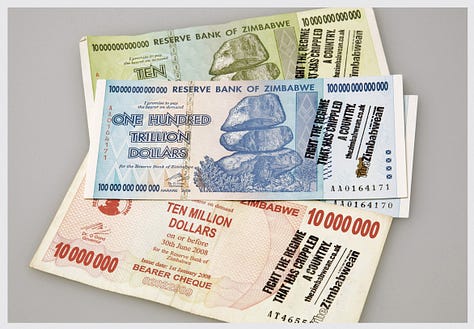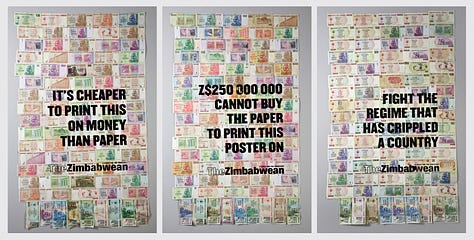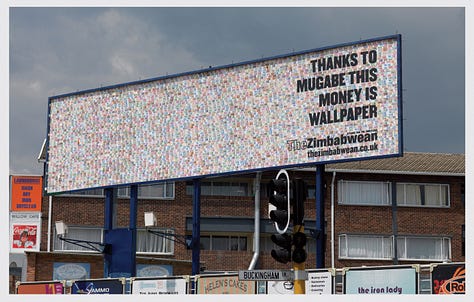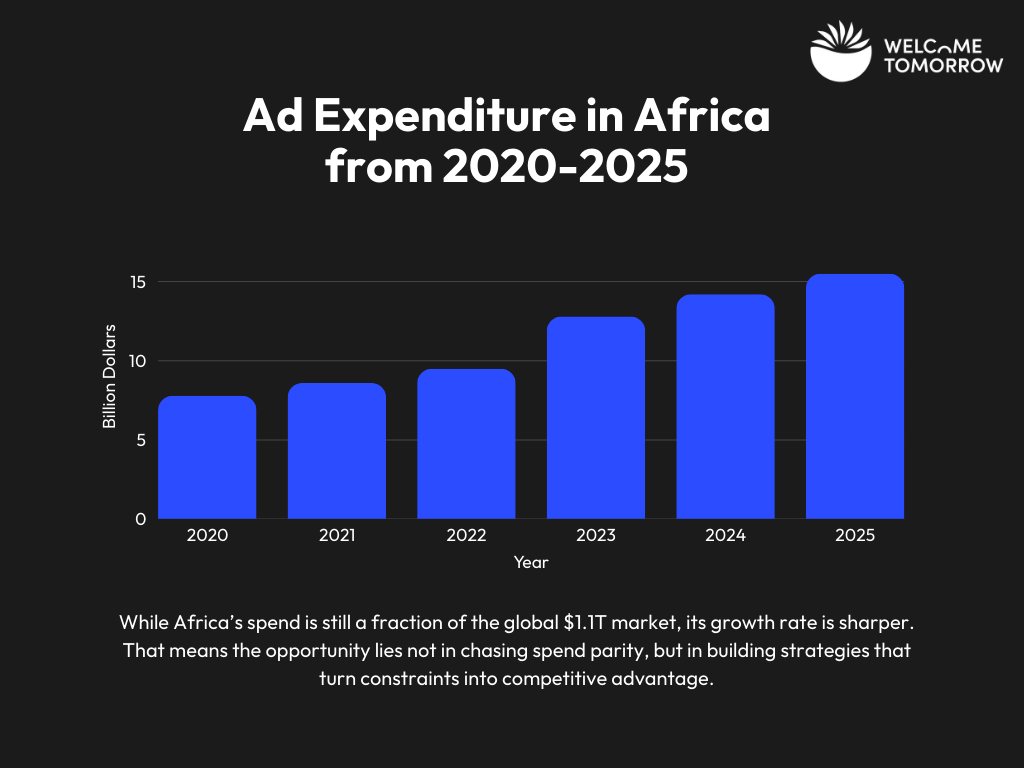The Growth Lesson Hidden in a Trillion Dollar Note 💸
Welcome to your latest edition of Welcome Tomorrow Insights, your go-to source for the latest in growth marketing strategies and impactful industry updates.
TL;DR:
Zimbabwe’s hyperinflation turned money into wallpaper. Banknotes worth billions and trillions couldn’t even buy bread.
The Zimbabwean newspaper saw an opportunity in this collapse. With no budget for posters or billboards, they printed their headlines directly onto the currency itself. Each note became a protest, a piece of guerilla media that spread hand to hand.
The gamble paid off. Website visits skyrocketed from 100,000 to 2 million in a week. Sales jumped 276%. The campaign won global acclaim, including the Cannes Lions Grand Prix. All on a near-zero budget.
The lesson for you: Marketing’s greatest ROI doesn’t come from how much you spend, but from how creatively you turn cultural truth into currency.
“A trillion dollars can’t buy the truth.”
In 2009, at the height of Zimbabwe’s economic collapse, this line appeared stamped across a worthless banknote. It wasn’t graffiti. It wasn’t protest art. It was advertising.
And not just any advertising, it was one of the most radical, subversive, and effective marketing campaigns the continent, and the world, had ever seen.
The backdrop: collapse as context
Hyperinflation had gutted Zimbabwe’s economy. Banknotes in billion- and trillion-dollar denominations were printed daily, but they were worth less than the paper they were made of. A loaf of bread could cost billions. Taxi drivers carried bags of notes for fares. Families used money as wallpaper.
Meanwhile, The Zimbabwean, an independent newspaper critical of the Mugabe administration, was under siege. Punitive taxes crippled its circulation. Advertising revenue evaporated. The brand was silenced in its home market, starved of oxygen.
Conventional marketing was out of the question. Budgets were gone. Billboards were unaffordable. Media space was blocked.
Yet from this suffocation came one of the most ingenious creative breakthroughs of the decade.
The idea: worthless money becomes priceless media
If the administration had made Zimbabwean currency worthless, why not weaponise that worthlessness?
The campaign team began overprinting The Zimbabwean’s headlines directly onto real banknotes. The notes became protest posters, handouts, and billboards all in one.
“Thanks to Mugabe, this money is wallpaper.”
“Fight the regime that made your money worthless.”
“A trillion dollars can’t buy the truth.”
The brilliance lay in its media inversion strategy: the cheapest, most devalued item in the country was reframed as high-value advertising real estate.
This was creative disruption at its most audacious, hijacking a symbol of economic ruin and turning it into a cultural megaphone.



The mechanics: guerilla meets behavioural economics
The campaign wasn’t just clever copy. It was precision behavioural psychology.
Currency triggers deep cognitive associations of value. By printing propaganda-defying truths on the notes themselves, the campaign created cognitive dissonance: an object universally tied to worth now carried a message of worthlessness. That friction forced attention.
Strategically, it worked on three levels:
It turned currency into owned media (controllable, scalable at low cost).
It generated earned media globally as the story travelled across news cycles.
It became experiential media, something people touched, shared, and remembered.
The notes travelled beyond Harare’s streets. They were mailed abroad, carried by activists, picked up by international journalists, and ultimately became viral artefacts before “virality” was even the industry buzzword it is today.
ROI Without the ‘I’
The results spoke for themselves:
Website visits shot from 100,000 to over 2 million in one week.
Sales rose 276%.
The Zimbabwean became a global symbol of defiance.
And Cannes Lions gave the campaign its Outdoor Grand Prix , ironic recognition for a brand that couldn’t afford a billboard back home.
The total spend? Ink.
The return? Cultural capital, audience growth, and brand authority on an international scale.
The enduring marketing lessons
Fifteen years later, The Trillion Dollar Campaign is still studied because it illustrates marketing’s most enduring truths:
Constraints fuel creativity
With no budget and no access to media, the team engineered a solution by reframing abundance (worthless notes) as opportunity. This was resource-based strategy in action.The medium can be the message
Marshall McLuhan’s idea came alive here. By fusing channel and message, the campaign achieved resonance beyond what a poster or TV spot could deliver.Earned media compounds faster than paid
Every banknote carried exponential reach. Each one sparked conversations, drove press, and reinforced the brand’s authority. Attention was bought not with money, but with audacity.
What It Means for Growth
The genius of The Trillion Dollar Campaign wasn’t just the copy on the notes, it was the way it rewrote the rules of growth.
When budgets disappeared, scarcity became strategy. Worthless paper turned into the most abundant media in the country. That’s a reminder: what feels like a barrier can actually be your strongest lever.
By stamping truth onto currency, the medium and the message became inseparable. That’s where impact multiplies, when the channel itself tells the story.
And because it spoke to a cultural truth everyone already felt, “our money is worthless”, the message spread faster than any paid campaign could have. Earned media didn’t just add reach, it compounded belief.
👉🏾 The lesson for us? Growth doesn’t always belong to the biggest spender. It belongs to the brand bold enough to reframe what value means.
Anything You Control Can Be Media
Ad spend is shooting up, $1.1T globally, $15.5B in Africa by 2025 but the returns aren’t keeping pace. CPMs climb, engagement drops. We’re paying more, and getting less.
That’s why The Zimbabwean’s campaign still feels so relevant. They didn’t buy media; they created it.
And that’s the part marketers often forget. Owned media isn’t just your site or socials. It’s receipts. It’s packaging. It’s the USSD menus people click through every day. It’s anything you already control but haven’t thought of as a channel.
If paid media is getting less efficient, the smart play is to look harder at what’s already in your hands. Because if Zimbabwean cash could spark a global campaign, what overlooked asset in your world could do the same?
Join Our Community 👥
Check out the blog, follow along on socials, and stay in the loop as we share the wins, lessons, and experiments shaping growth marketing today. 🤝🏾
PS: The really good stuff? You’ll find that on our TikTok. 👀😂
We’re Your Growth Partner 🤝🏾
Tell us where you are and where you want to be ,and we’ll help get you there.



